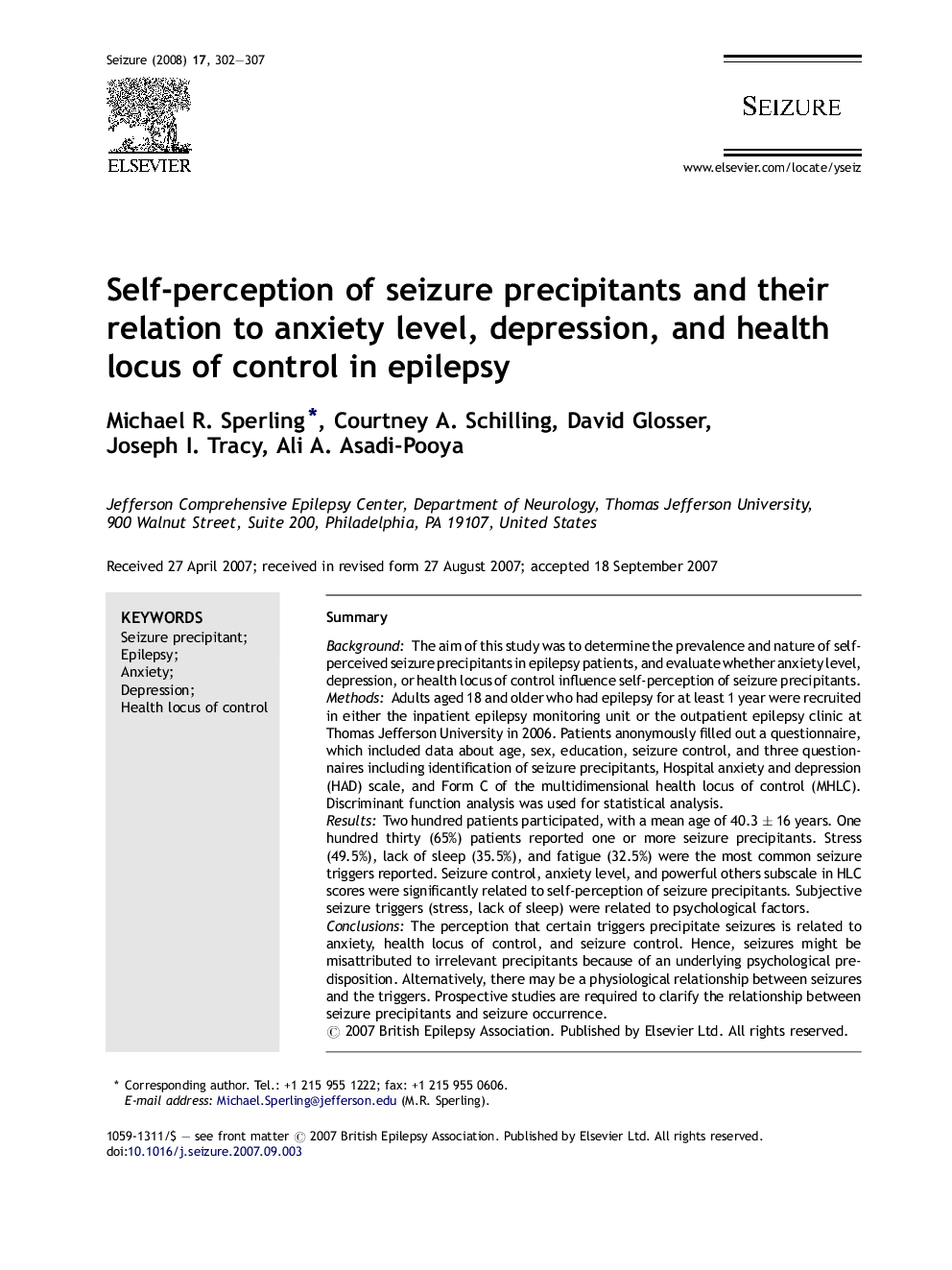| Article ID | Journal | Published Year | Pages | File Type |
|---|---|---|---|---|
| 341235 | Seizure | 2008 | 6 Pages |
SummaryBackgroundThe aim of this study was to determine the prevalence and nature of self-perceived seizure precipitants in epilepsy patients, and evaluate whether anxiety level, depression, or health locus of control influence self-perception of seizure precipitants.MethodsAdults aged 18 and older who had epilepsy for at least 1 year were recruited in either the inpatient epilepsy monitoring unit or the outpatient epilepsy clinic at Thomas Jefferson University in 2006. Patients anonymously filled out a questionnaire, which included data about age, sex, education, seizure control, and three questionnaires including identification of seizure precipitants, Hospital anxiety and depression (HAD) scale, and Form C of the multidimensional health locus of control (MHLC). Discriminant function analysis was used for statistical analysis.ResultsTwo hundred patients participated, with a mean age of 40.3 ± 16 years. One hundred thirty (65%) patients reported one or more seizure precipitants. Stress (49.5%), lack of sleep (35.5%), and fatigue (32.5%) were the most common seizure triggers reported. Seizure control, anxiety level, and powerful others subscale in HLC scores were significantly related to self-perception of seizure precipitants. Subjective seizure triggers (stress, lack of sleep) were related to psychological factors.ConclusionsThe perception that certain triggers precipitate seizures is related to anxiety, health locus of control, and seizure control. Hence, seizures might be misattributed to irrelevant precipitants because of an underlying psychological predisposition. Alternatively, there may be a physiological relationship between seizures and the triggers. Prospective studies are required to clarify the relationship between seizure precipitants and seizure occurrence.
